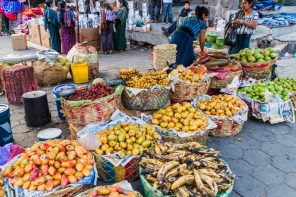Japan and Korea are renowned for their vibrant cities and rich histories, but they also boast a wealth of wildlife that can be discovered in their beautiful national parks and natural reserves. From snow-capped mountains in Japan to lush forests in Korea, these two countries offer incredible opportunities for safari-style adventures. Below are some of the best destinations for wildlife enthusiasts looking to explore the wild side of these captivating nations.
Wildlife in Japan: Discovering Nature’s Beauty
Japan’s diverse ecosystems, stretching from the subtropical south to the frigid north, are home to some of the most fascinating wildlife in the world. Travelling through Japan’s expansive landscapes allows visitors to encounter unique animals in their natural habitats.
Jigokudani Monkey Park – Japan’s Famous Snow Monkeys
One of the most iconic wildlife experiences in Japan can be found at Jigokudani Monkey Park in Nagano Prefecture. Here, visitors can see Japanese macaques, also known as snow monkeys, relaxing in hot springs, especially during the cold winter months. Surrounded by thick forests and snow-covered mountains, this park offers a rare opportunity to witness these remarkable creatures in a picturesque setting.

Travellers can easily reach Nagano from major cities such as Kyoto or Tokyo. The Kyoto to Tokyo train is a convenient and fast way to traverse Japan’s landscape, offering stunning views along the way. From Tokyo, a short trip will take you to the mountains where the monkeys dwell, adding a natural contrast to your urban adventures.
Hokkaido – Japan’s Northern Wildlife Paradise
Hokkaido, Japan’s northernmost island, is known for its remote wilderness and diverse fauna. Visitors flock to Shiretoko National Park, a UNESCO World Heritage Site, to catch glimpses of brown bears, red-crowned cranes, and Blakiston’s fish owls. The park also offers opportunities to see marine life, including orcas and sea lions.
During winter, Hokkaido becomes a haven for birdwatchers as large numbers of Steller’s sea eagles and whooper swans migrate to the region. The snowy landscapes also offer a perfect setting to spot Hokkaido’s sika deer and red fox, which thrive in the island’s chilly climate.
Yakushima – A Subtropical Escape
In the far south, Yakushima Island provides a very different experience. This subtropical island is home to some of Japan’s oldest cedar trees, known as Jomon Sugi, and unique wildlife, including the Yakushima macaque and Yaku deer. The dense, misty forests of Yakushima offer a magical setting for hiking and wildlife exploration, while its surrounding waters are known for attracting loggerhead turtles during the nesting season.
Wildlife in Korea: Hidden Treasures of the Peninsula
South Korea may be known for its rapid urban development, but the country is also home to a surprising array of wildlife. Its national parks and less-explored natural areas are perfect for adventurers looking to discover Korea’s native animals.
Travellers coming from Seoul may choose to take the train from Seoul to Busan to start their journey. This high-speed train offers scenic views of the Korean countryside, and from Busan, it’s an easy trip to the national park. Combining nature with South Korea’s efficient transport system makes exploring these hidden wildlife gems more accessible than ever.
Jirisan National Park – Korea’s Largest Wildlife Sanctuary
Jirisan National Park, the largest in South Korea, is one of the last refuges of the Asiatic black bear, a species that conservationists have worked hard to protect. The park’s forests, rivers, and mountains create an ideal habitat for these shy creatures, as well as other species such as wild boar and mandarin ducks. Hiking through Jirisan’s scenic trails, visitors can often spot wildlife while enjoying some of the most beautiful landscapes in the country.

The DMZ – A Surprising Wildlife Haven
The Demilitarized Zone (DMZ), which separates North Korea and South Korea, may be best known for its historical and political significance, but it has also become an unexpected haven for wildlife. Due to the limited human activity in the area, many endangered species have found refuge here, including the Amur leopard and Siberian musk deer.
Although access to the DMZ is restricted, visitors can participate in guided tours to experience this remarkable area. The DMZ is especially attractive to birdwatchers, with its thriving populations of cranes and white storks, which migrate through the region every year.
Seoraksan National Park – Korea’s Majestic Mountains
Seoraksan National Park, located in the northeastern part of South Korea, is famous for its jagged peaks, crystal-clear streams, and stunning autumn foliage. It’s a favourite destination for hikers and wildlife lovers alike. The park is home to a variety of animals, including the rare Korean goral, roe deer, and wild boar. Seoraksan’s diverse ecosystem also supports over 1,000 species of plants, making it a haven for botanists as well as animal lovers.

The park’s well-marked trails lead through dense forests and up rocky slopes, offering visitors the chance to immerse themselves in nature while spotting local wildlife.
Suncheon Bay – A Coastal Ecosystem Teeming with Life
For those seeking a unique coastal wildlife experience, Suncheon Bay in South Korea is a must-visit. This stunning wetland is famous for its vast reed fields and tidal flats, home to hundreds of bird species, including the endangered hooded crane. Suncheon Bay’s rich ecosystem supports a variety of marine life and migratory birds, making it a paradise for birdwatchers and nature enthusiasts. Visitors can explore the bay via well-maintained boardwalks or take a boat ride to observe the flora and fauna up close.
Conclusion: Japan and Korea’s Wildlife Wonders Await
Japan and Korea may be famous for their cities and cultures, but their wildlife offerings are equally impressive, with experiences that rival even safaris in Africa. Whether you’re exploring the snow monkey hot springs of Jigokudani, marvelling at the red-crowned cranes in Hokkaido, or hiking through the mountains of Jirisan, these two countries provide a rich tapestry of safari-style adventures. Both nations offer unique experiences that cater to nature lovers, making them ideal destinations for your next wildlife adventure.





